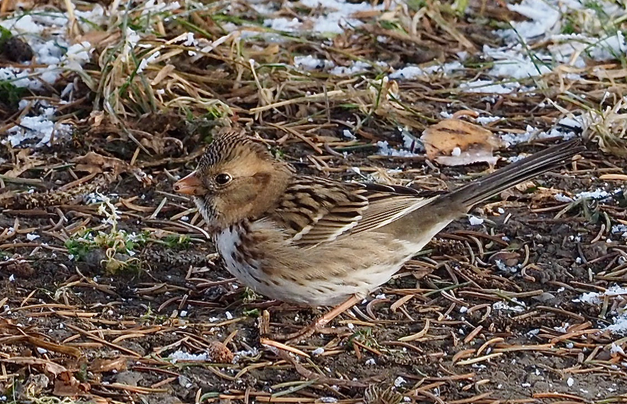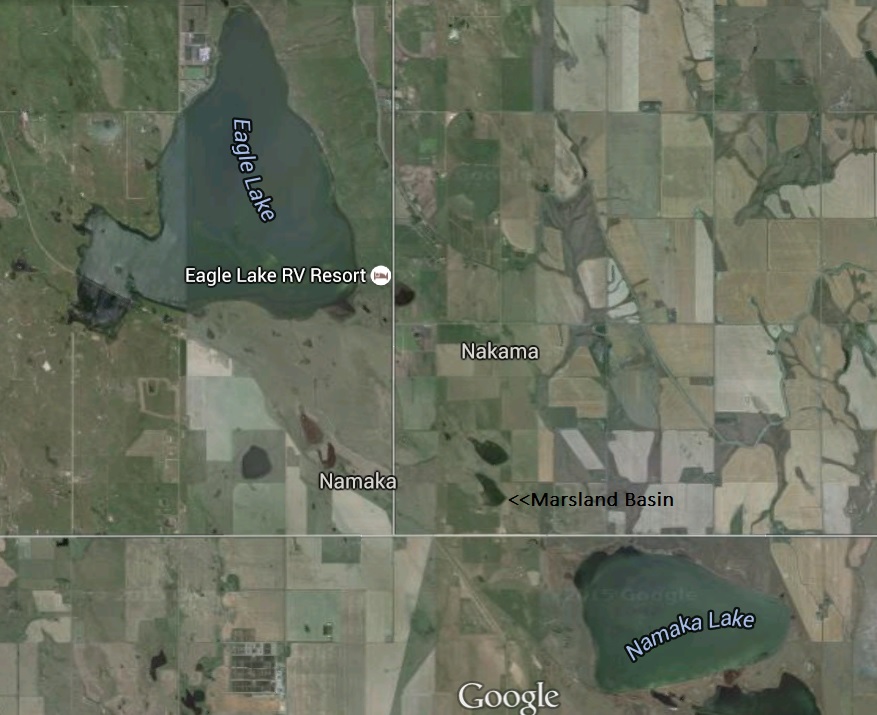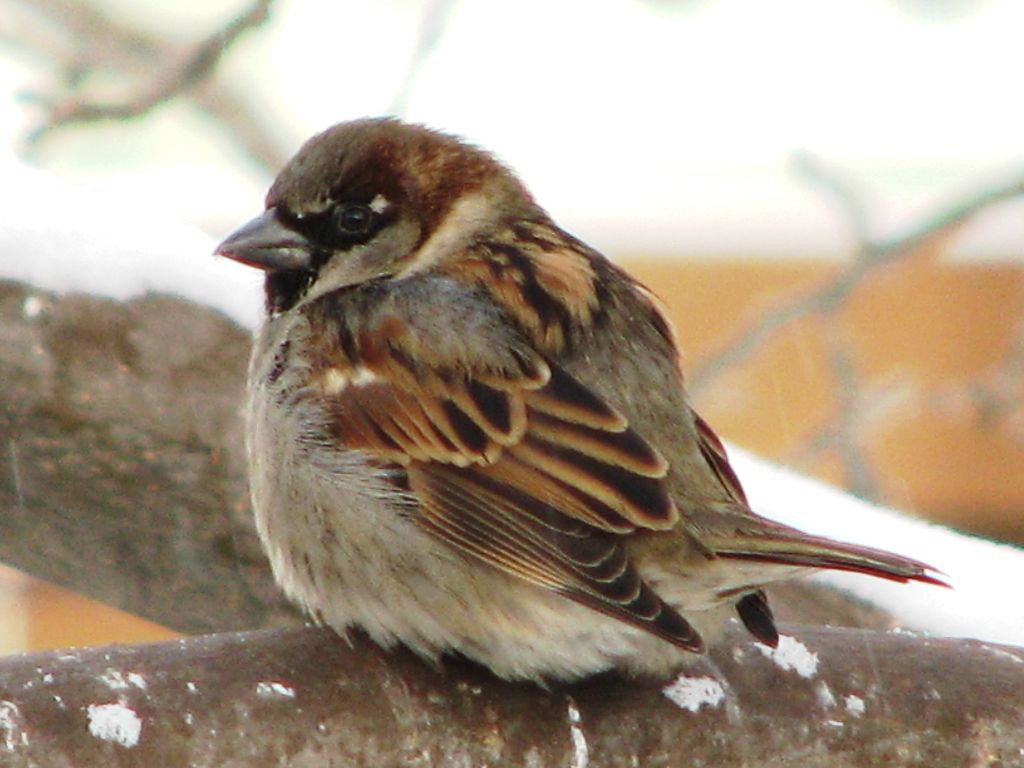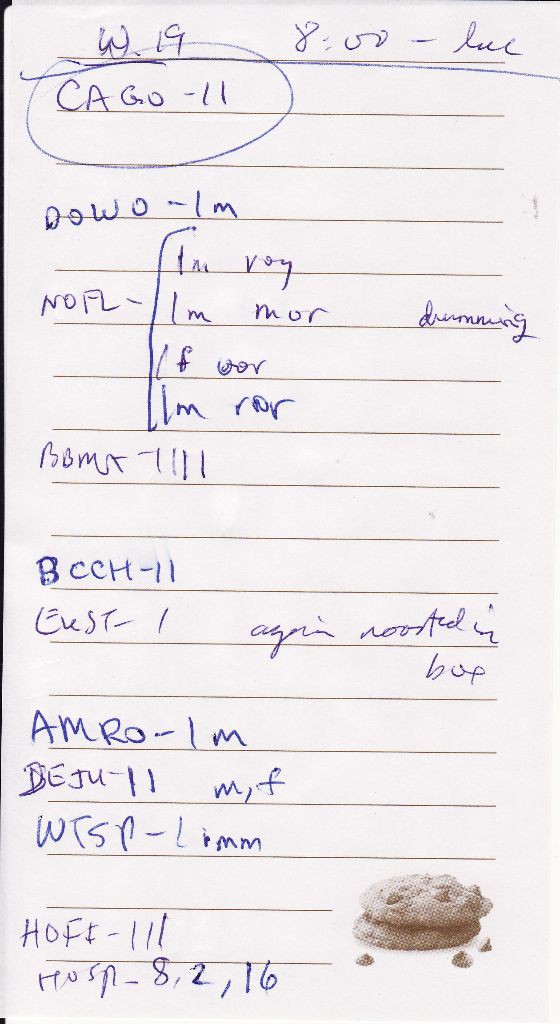Posted by Bob Lefebvre
For those of you who are participating in the eBird Calgary 2015 birding competition, and for anyone else interested in using eBird, here is how you set up your patch list. The next post will show how to set up your yard list.
These instructions for setting up a patch will apply to any patch you might want to have, to track all your sightings in an area. An example is to have a Fish Creek Provincial Park patch, which will include every location that you have birded within the park. For the competition, the patch we are competing in is an 80-km radius circle centred on the Centre Street bridge in Calgary. This is the Calgary May Species Count circle and the traditional “Calgary region” for local birders. Several eBird users have had this patch in their lists for years. During the competition year, participants will have to call this patch “2015 Calgary Patch Challenge,” which will enable the committee and other participants to easily see how everyone’s totals compare. The name can easily be changed afterwards and the patch retained.
Besides the competition to see who can find the most species in the 80-km circle, we are having a competition to see who can record the most species in their yard. Birders can compete in either or both of these. Like the patch challenge, participants must set up a “Yard List,” which is essentially a patch that consists of just one location, your yard. The yard list must be called “2015 Calgary Yard Challenge.” (It is not enough to just have a birding location at your yard that you submit observations from. Unless you set it up as an official Yard List, it will not appear in the list of all Yard Lists in the region.)
Here is a link to the eBird page that results from doing a search of their Help file for “patch.” There is a lot of good information there and I encourage you to read through it, but I think that following the instructions in this blog post will be the most straightforward way to get get your patches set up.
You only need to set up the patch list once, and all your past and future sightings will be included in the totals, broken down by month, year, and life. eBird keeps a record of all your birding locations, and which ones are in which patch or patches. (A location can be in more than one patch; for example, my Bebo Grove location is included in my Fish Creek Provincial Park patch, my Calgary City Limits patch, and my 2015 Calgary Patch Challenge patch.) The only thing you will have to remember is that any time you go birding at a new location that is within your patch, you will have to edit the patch or patches to add the new location to them. You don’t have to do this right away but you will want to check periodically to make sure that all your patches have the proper locations included. For the 80-km circle, you may need to refer to the map for locations near the edge to see if they are in or out. For the Yard List patch, you should never have to add locations to it since it will only have your yard location.
All of this will become clearer with some visual aids. First, you will need to have submitted some observations so there is at least one location stored in your eBird. Sign in to eBird. In this example, I have clicked on the “My eBird” tab at the top of the page. My information shows that I have submitted five checklist (one was from my yard, two others in the city, one on Grand Valley road north of Cochrane, and one in Red Deer).

Next, to set up a patch, click on the “Explore Data” tab at the top. This will bring up the “View and Explore Data” page below. Now under the “Your Totals” box on the right, click on the “Patch Totals” link.

The “My Patch Lists” page below will appear. At first it will say you don’t have any patches, and below that, it will list all the patch leaders in the specified region (Canada in this example). Click on the green “Add a Patch” button on the right.

The “Add a Patch” page below appears. There is a spot to name your new patch, and below that, a list of all of your birding locations from all your sighting submissions. Type in “2015 Calgary Patch Challenge” for the name, as I have here, and then check the little boxes to the left of only those locations that will be included in your patch. In this example, all except the Red Deer location are within the 80-km circle. As you check them, they will appear in the right-hand list “Currently in your Patch.” When you’re done, click the green “Save Patch” button at the bottom.

You are done! Now the “2015 Calgary Patch Challenge” patch appears in your list, with 36 species recorded (see below). Note the “Edit” button on the right of the patch name; this will be used to add more locations to the patch in the future.
The list of all the top patches in the region is shown at the bottom of the page (the “Current Leaders”). I have changed the region to Alberta from Canada, and clicked the “Month” tab, and there is the patch I created, in third place. (If I left the region as Canada my patch would be much farther down the list. For this competition, it is best to use the Alberta region to view results. You can’t use the county, since our circle is not entirely within Calgary county.) You can now click on the Life or Year tabs to see where you stand there, or click on your species totals to see the actual species you reported.

For example, here is the list of the 36 species in my patch. It was produced when I clicked on the “36” in my Species Totals, Year column above.

That’s all you need to get started, but I’ll show you how to edit your patch to add more locations to it. Initially I had five lists from five different locations, but now I have submitted new observations from a new location, Votier’s Flats. Below I have clicked the “edit” button by my patch name. The Edit page shows all my locations, including the new one, on the left, and the locations that are currently in my patch on the right.

Simply check the box by the Votier’s Flats location, and it will appear in the list on the right. Then Save the patch again.

After saving the patch, it now has 42 species on six checklists and is in first place for the month, as shown below.

Now it should be a breeze to set up your Yard List so you can compete in that competition too. That will be covered in the next post.
(Note: the lists I used were for illustration purposes only and have since been deleted.)

































